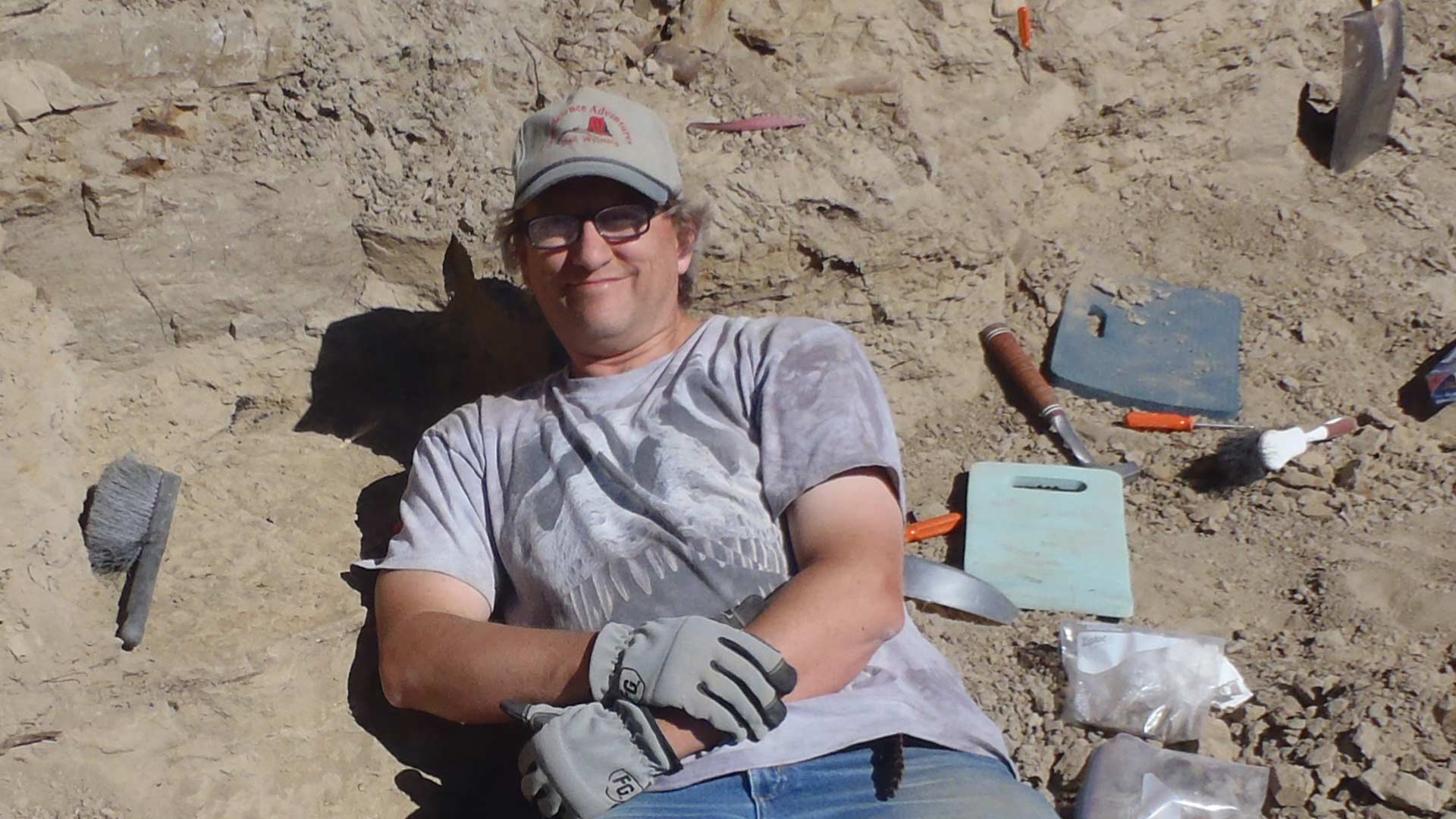- May 13, 2020
- By Kimbra Cutlip
New research that includes a University of Maryland scientist suggests that the largest leggy dinosaurs like the T-rex evolved their proportions not for speed to catch prey or avoid predators, as scientists have generally assumed, but to make them better walkers.
The study by Thomas Holtz, principal lecturer in the Department of Geology, and colleagues suggests that long legs helped the biggest dinosaurs conserve energy over long distances as they ambled in search of prey. It was published today in the journal PLOS ONE.
“For the big guys, it may be about being a marathoner rather than a sprinter,” Holtz said.
He and collaborators from Mount Marty College, Keck School of Medicine of USC and McGill University analyzed a variety of metrics like limb proportions, size ratio, body mass and gait to estimate the top speeds of more than 70 species from a group of dinosaurs called theropods. Ranging in size from less than a half-pound to more than nine tons, they included Tyrannosaurus rex and many other two-legged predators that dominated the Earth for 180 million years. Bipedalism and running speed have often been cited as major contributors to their success.
But the study revealed a more nuanced story: Longer legs were associated with higher top speeds in small and medium-sized dinosaurs, but that didn’t hold true for dinosaurs weighing over 2,200 pounds. Scientists have long known that larger body size can limit speed, and the study showed that large dinosaur species with longer legs were indeed no faster than their stubby-limbed brethren.
By calculating how much energy each dinosaur expended while moving at walking speeds, however, the researchers found that among the largest dinosaurs, those with longer legs needed less energy to cruise around.
“That’s actually a very beneficial savings, because predators tend to spend a great deal of their time foraging, searching for prey,” Holtz said. “If you are burning less fuel during the foraging part of the day, that's an energy savings that dinosaurs with shorter leg forms didn't get.”
Topics
Research